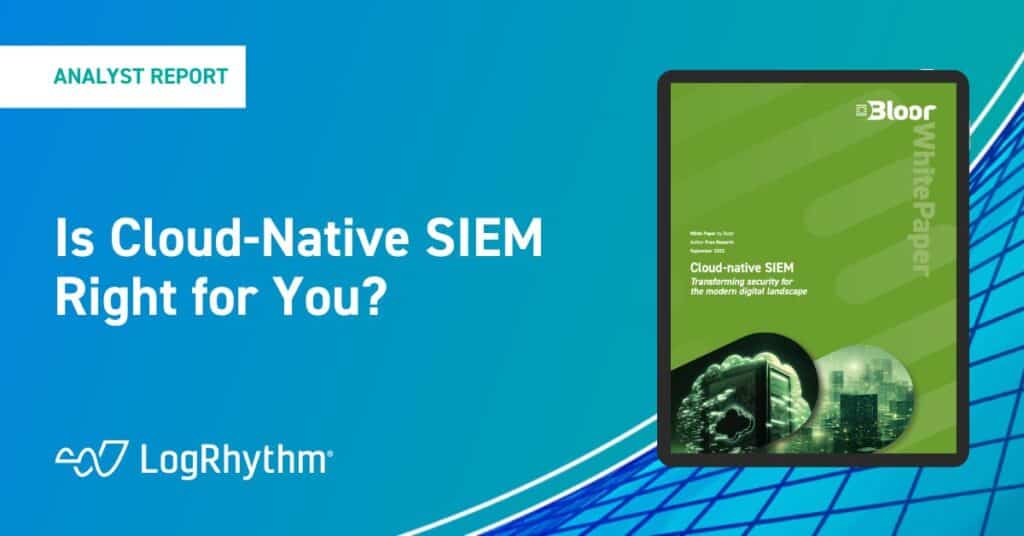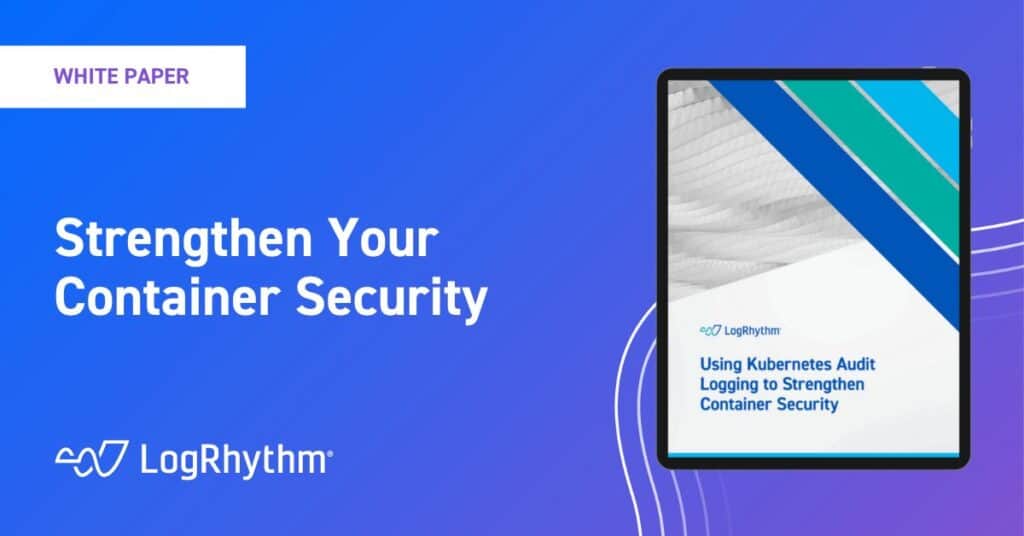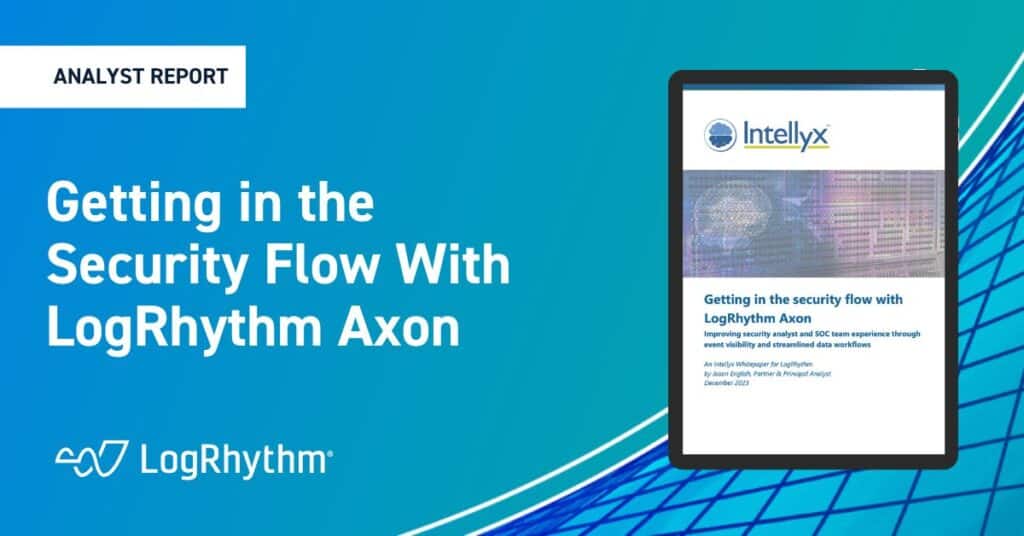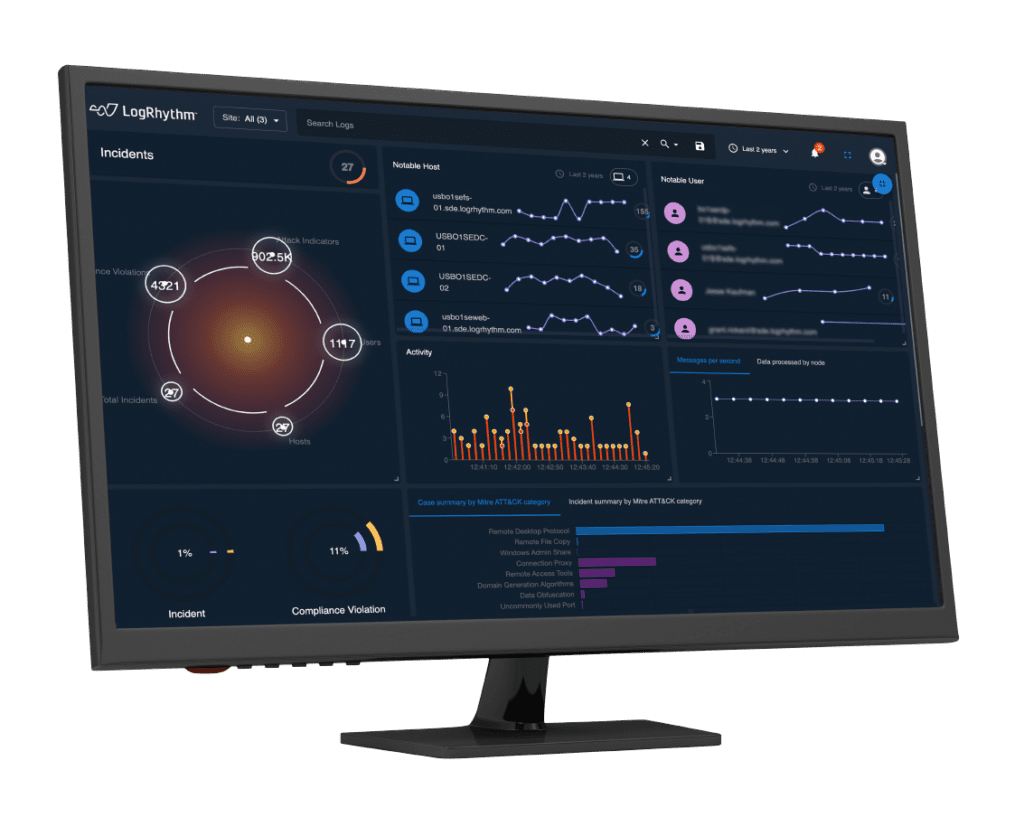Table of Contents
Many organizations operating in today’s digital world rely on cloud computing services to store, process, or manage sensitive data or critical applications — and to do so successfully, they need to prioritize cloud security.
The term “cloud security” refers to the set of practices and technologies designed to protect data, applications, and infrastructure in cloud computing environments. It encompasses measures like encryption, access controls, and threat monitoring and detection to safeguard information from unauthorized access, data breaches, and cyberthreats. Keep reading to learn more about cloud security and why it is crucial for ensuring the confidentiality, integrity, and availability of data and services hosted in remote servers managed by third-party providers.
What is Cloud Security?
Cloud security refers to the measures put in place to protect data, applications, and infrastructure hosted in cloud environments. These environments are essentially remote servers and networks managed by third-party providers like Amazon Web Services (AWS), Microsoft Azure, Google Cloud Platform (GCP), and others. Cloud security is crucial because it ensures that sensitive information and critical systems are safeguarded from cyberattacks.
Cloud security is a shared responsibility between the cloud provider and the customer. While the provider is responsible for the security of the cloud infrastructure, the customer — meaning the company storing information in the cloud — is responsible for securing their data and applications within the cloud. This collaborative effort is essential for maintaining a secure cloud environment. Naturally, assessing the security measures of the cloud service provider is important. Customers should ensure that their provider adheres to industry standards and best practices.
What Is Cloud Computing?
“Cloud computing” is a term used to refer to services of various models and types involved in computing resources and applications delivered over the internet. These services are provided by cloud service providers who host and manage the necessary infrastructure. The three primary models of cloud computing services are:
Infrastructure as a Service (IaaS)
IaaS provides virtualized computing resources over the internet. This includes virtual machines, storage, networks, and sometimes load balancers and firewalls.
IaaS is used by businesses and individuals who want to have control over the underlying infrastructure while still leveraging the benefits of cloud computing. This type of control is particularly useful for tasks like hosting websites, development and test environments, and running virtual machines.
Examples: Amazon Web Services (AWS), Microsoft Azure, and Google Cloud Platform (GCP).
Platform as a Service (PaaS)
Not everyone wants or needs total control, of course. PaaS provides a platform that allows developers to build, deploy, and manage applications without worrying about the underlying infrastructure. It typically includes development tools, database management systems, and application hosting services.
PaaS is popular among developers who want to focus solely on writing code and not be concerned with managing servers, databases, or networking. As such, it’s excellent for developing and deploying applications quickly.
Examples: Google App Engine, Heroku, Microsoft Azure App Service, and AWS Elastic Beanstalk.
Software as a Service (SaaS)
SaaS delivers software applications over the internet on a subscription basis. In this form of cloud computing, users access these applications through a web browser and the software is hosted and maintained by the provider.
Gone are the days of software coming in the form of a CD that needs to be physically installed in the computer. SaaS is suitable for end-users and businesses who want to use software applications without the hassle of installation, maintenance, or managing servers. It’s commonly used for email services, office applications, CRM systems, and collaboration tools.
Examples: Google Workspace, Microsoft 365, Salesforce, Dropbox, and Zoom.
Key Differences in Cloud Service Models
As you can see, each of these three models has unique benefits that make them applicable and useful in certain situations over others. Here are some key distinctions between these cloud service models:
Responsibility
- IaaS: Cloud customers are responsible for managing and maintaining the operating system, applications, and data.
- PaaS: Cloud customers are able to focus solely on developing and deploying applications. In a PaaS situation, the provider manages the rest.
- SaaS: The provider manages all aspects, including the application, data, and infrastructure.
Flexibility
- IaaS: This provides the most flexibility and control over the infrastructure and applications.
- PaaS: This offers a platform for developers to build and deploy applications without worrying about underlying infrastructure.
- SaaS: Think of this as a turn key software solution. SaaS offers the least flexibility as users interact with pre-built applications without access to the underlying infrastructure.
Scalability
All three models can be scaled, but the level of control and granularity varies. IaaS offers the most control, followed by PaaS, and SaaS offers the least.
Ultimately, the choice between IaaS, PaaS, and SaaS depends on the specific needs of a business or individual, as well as the level of control and management desired over the computing resources and applications.
Cloud Security Challenges
The adoption of cloud computing has brought numerous benefits, but there are also security risks and common cloud security challenges that organizations need to address.
Security Risk #1: Data Loss and Breaches
According to Statista, 64% of organizations say data loss is their biggest cloud security concern. Cloud computing and services offer a lot of benefits such as easy collaboration and data sharing, but this comes with security risks. With more hybrid working models and the expanding attack surface, cybersecurity threats such as malicious insiders, malware, advanced persistent threats (APTs), IoT-based attacks, Distributed Denial-of-Service (DDoS), and more, are still a major concern. These can ultimately lead to damaging data breaches and potential financial and reputational damage or compliance fines.
Security Risk #2: Misconfigurations
Misconfigurations, weak authentication strategies, or default credentials are leading reasons for why organizations experience loss of data. That’s why it is critical to manage user identities and permissions in a cloud environment so that only authorized individuals or systems have access to specific resources.
Security Risk #3: Compliance and Regulatory Concerns
When protecting sensitive data like email passwords, bank account information, or medical records, storing that information in the cloud is a concern. Many industries have specific regulations governing the storage and handling of data, such as HIPAA for healthcare or PCI. For this reason, some opt out of cloud storage altogether, and prefer to manage sensitive information in their own data centers
Cloud Security Best Practices
While cloud security risks certainly warrant a serious plan of action to be in place, they don’t mean cloud data storage is too risky to make it feasible. Rather, it behooves organizations in all industries to follow a few cloud security best practices to mitigate these risks.
1. Take Inventory and Routinely Audit Access
The first step to securing data in the cloud is taking inventory of all your organization’s SaaS applications, users, and hosts within your network. This way, you can ensure what is or is not being accessed via Single Sign-On (SSO). It’s important to establish a routine of regularly auditing data access as employees and third-party partners come and go.
2. Implement IAM Protocols
Implementing robust identity and access management processes is essential. This involves defining roles, permissions, and access levels for each user or system. Tools such as multi-factor authentication (MFA) adds an additional layer of protection by requiring additional verification beyond just a password.
3. Monitor Log Data and Perform Incident Response
Continuous monitoring of the cloud environment is a critical component of maintaining robust cybersecurity. Through continuous monitoring, organizations can promptly detect unusual activities, patterns, or behaviors that may indicate potential security threats.
Incident response plans serve as a structured framework that outlines the step-by-step actions to be taken in the event of a security incident. These plans are crucial for ensuring a swift, coordinated, and effective response to any identified threat or breach. They detail roles and responsibilities, communication protocols, and escalation procedures in the face of an incident.
Red team exercises, scenarios involving a group of skilled professionals who simulate adversarial attacks on the organization’s cloud environment, are a fantastic way to uncover vulnerabilities, exploit weaknesses, and expose gaps in security defenses. This process not only identifies areas for improvement in security processes, but it also provides an opportunity to evaluate the effectiveness of the incident response plan, the accuracy of threat detection systems, and the proficiency of the security team in handling simulated attacks.
4. Understand Compliance Obligations
Cloud providers often offer compliance services and certifications to help customers meet industry-specific regulatory requirements; however, it’s crucial for organizations to understand their own compliance obligations and work with cloud providers to implement necessary controls.
5. Data Backup and Disaster Recovery
Implementing regular backups and having a robust disaster recovery plan ensures that data can be restored in the event of data loss, corruption, or other disasters. When working with a security vendor, have a clear understanding of your disaster recovery abilities. Choosing a security vendor that enables you to properly perform disaster recovery is essential.
6. Security Policies and Training
Even the best security system won’t work if team members don’t know how, or why, to use it. Establishing and enforcing security policies, as well as providing training and cybersecurity awareness programs, helps ensure that all users understand and follow security best practices.
Cloud Security Solutions
Identity and Access Management (IAM)
In order to keep the cloud secure, one must ensure that only authorized individuals or systems can access specific resources within the cloud environment. IAM systems are a basic step to reduce the attack surface and manage user identities and their associated permissions.
Security Information and Event Management (SIEM)
SIEM solutions are a crucial tool for organizations looking to enhance their cybersecurity posture by providing the capabilities needed to monitor, analyze, and respond to security events effectively. It is a comprehensive approach to security management that involves the collection, correlation, and analysis of security-related data from various sources across an organization’s network.
SIEM is considered the industry leading cloud security solution because it offers numerous benefits, such as centralized logging visibility, threat detection and response, compliance and reporting, reduced alert fatigue, historical data analysis, and more.
Cloud Security Posture Management (CSPM)
CSPM tools conduct scans of cloud configurations to pinpoint insecure setups or deviations from security standards and compliance mandates. Among the leading factors contributing to cloud security breaches is security misconfiguration. CSPM tackles these by not only recognizing these misconfigurations but also promptly rectifying vulnerabilities in impacted systems. Moreover, CSPM generates reports on cloud configurations for compliance-related objectives.
eXtended Detection and Response (XDR)
XDR introduces a new security framework to the arena that enhances the efficiency of delivering threat detection and incident response (TDIR) for organizations. Within cloud environments, there exist various strata, including public networks, virtual private networks (VPN), APIs, workloads, and applications. Additionally, there is a facet involving vulnerable user devices linking to cloud services.
XDR proves invaluable by integrating three distinct data sources into the TDIR regimen, culminating in the automatic creation of attack chronologies, expediting the investigation of incidents:
- Identity Management: It oversees both human users and service roles for any irregular activities.
- Cloud Logs: XDR amasses substantial quantities of log data from diverse layers within the cloud environment and extracts abnormal occurrences.
- Scrutinizing Network Flows: surpassing mere NetFlow monitoring for cloud machinery, XDR scrutinizes network traffic across the entirety of cloud environments, and subsequently executes automatic responses through the configuration of network segmentation.
One of XDR’s strengths lies in its capacity to amalgamate data originating from cloud environments with that from on-premises systems, along with other geographically dispersed systems, such as IoT.
Network Detection and Response (NDR)
NDR platforms help monitor, detect, and respond to suspicious or malicious network activities within cloud environments. NDR focuses on analyzing network traffic and identifying anomalies or potential security threats. It employs advanced algorithms and machine learning to establish a baseline of normal network behavior. It then compares real-time traffic against this baseline to identify any deviations that may indicate a security incident.
LogRhythm’s Cloud Security Solution
LogRhythm Axon is a cloud-native SIEM designed to help protect your on-prem, hybrid, and cloud environment. It’s optimized to work seamlessly with cloud services and can effectively monitor and protect cloud-hosted applications and data. Additionally, it provides real-time monitoring of security events across the environments, detecting and alerting your team to suspicious activities or potential security incidents promptly — allowing for faster response times.
Optimized for the analyst experience, LogRhythm Axon’s intuitive workflow gives analysts contextual insight into cybersecurity threats so they can reduce noise and quickly secure the environment. It automatically collects data from SaaS, self-hosted cloud, and on-prem sources from our hosted collectors and on-prem agents. Search driven widgets and an intuitive dashboard makes it easier to find information and respond to threats.
Built with a cloud-native architecture, LogRhythm Axon scales dynamically based on the needs of your organization. This is particularly important in cloud environments where resources can be quickly provisioned or de-provisioned. This solution eliminates the need for security teams to manage and maintain on-premises hardware and infrastructure, all while reducing the operational overhead associated with traditional SIEM deployments. Learn more to see what it can do to keep your organization’s cloud applications secure.
Resources

LogRhythm Axon: SIEM Product Tour
LogRhythm Axon is a cloud-native SIEM built to make the life of an analyst easier through seamless threat detection, investigation, and response. Get an inside look!

How Cloud-Native SIEMs Transforms Security
Adversaries are quick to exploit new technologies delivered via the cloud. Learn how cloud-native SIEMs can empower you to reduce risk to these threats.

Using Kubernetes Audit Logging to Strengthen Container Security
Explore how to use Kubernetes audit logging to better protect applications running in containers and to strengthen container security without disrupting DevOps teams’ operations.

Get in the Security Flow with LogRhythm Axon
Within cloud deployments, SaaS packages and API services, there are too many sources of logging and real-time event data coming in to make sense of it all. Overcome these obstacles by getting into an easier security “flow.”
